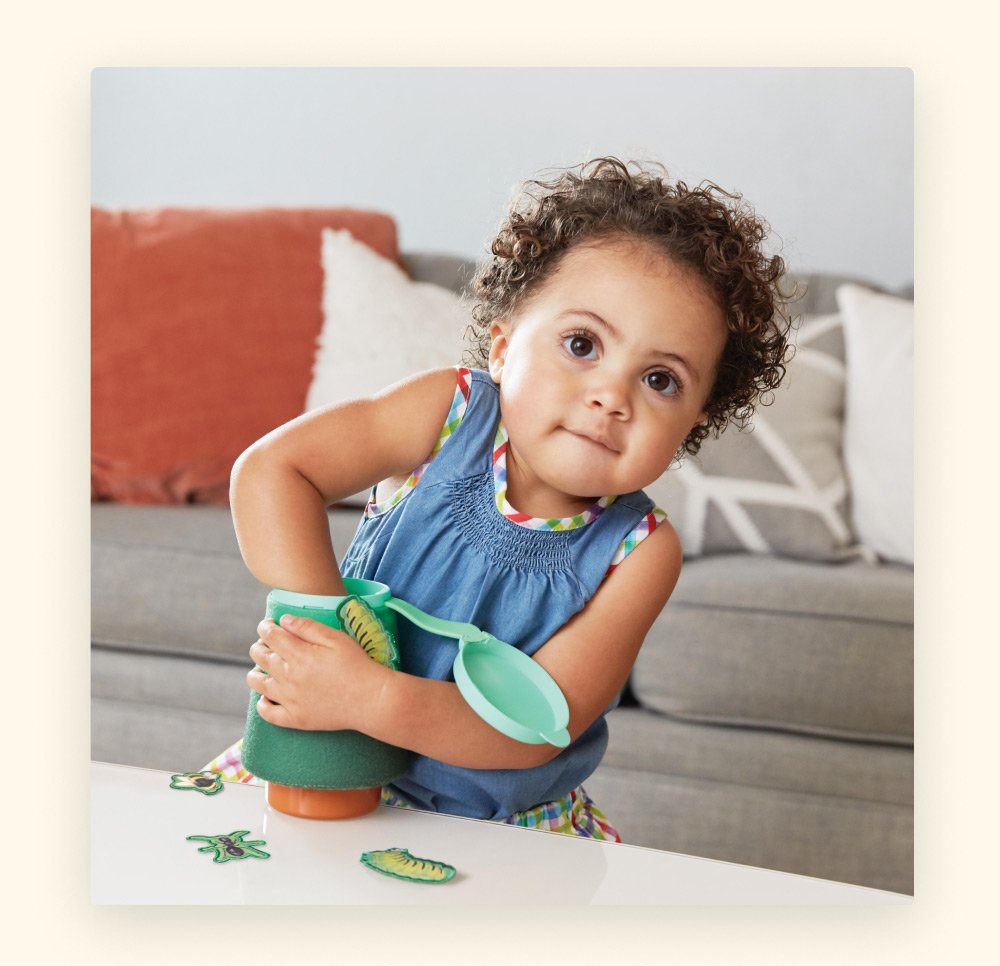The orientation schema: why your toddler loves a new view

Can’t get your toddler off the stairs? You can blame the “orientation” schema 🙃
When your toddler hangs upside down, looks through their legs, rides on your shoulders, or climbs up or down stairs, they’re exploring what the world looks like from a different perspective. The orientation schema teaches your toddler about balance and movement, and what their body can do in relation to their environment.
5 toddler activities for the orientation schema
1. Offer opportunities to climb safely
- Make a small obstacle course with something to climb over (like pillows), under (a chair or table), through (a play tunnel), and around (an ottoman or other larger obstacle). You can end your course with a homemade “crash pad”—a gym mat, large bean bag, or other soft landing spot for them to fall onto.
- Section off part of a staircase by sitting on one step and having someone else sit a few steps below. Invite your toddler to go back and forth between you.
- Consider investing in a Pikler Triangle, a classic Montessori tool for climbing.
2. Engage in “frolic play”
Frolic play is fun, physical play guided by an adult. This might include bouncing them on your lap, holding them around their torso (not their arms) and gently swinging them, playfully tossing them up in the air, or holding them by their ankles. This kind of movement engages their vestibular system, a sense that helps them learn to balance.
3. Push them in a bucket swing
This may seem like a no-brainer, but toddlers love the constant motion. If they need a little support, stuff a rolled-up blanket behind their back to steady them. To mix it up, try catching them by their feet, pushing them from both behind and in front, giving high fives, and playing peekaboo.
4. Let them step or crawl onto higher surfaces
Toddlers often love to get higher—or lower—whenever they can. This might mean stepping or crawling up onto a low curb at the park or a small step when you’re out for a stroll. When time permits, let them get up and down over and over again.
5. Give them a sturdy mirror during diaper changes
The Framed Mirror is a great tool for exploring this schema, as it allows your toddler to see their surroundings—as well as their own face—from multiple angles. Since your toddler is on their back, an unbreakable mirror gives them a new perspective as well as something to do with their hands 😉
In this post

The Organic Cotton Play Tunnel
The Lovevery Play Tunnel is perfect for hide and seek, peek a boo, crawling, and more. The tunnel can collapse, making it easy to pack and move. Learn more about the Lovevery Play Tunnel.
Learn more
The Charmer Play Kit
The Charmer Play Kit is designed to let your 3 – 4 month old baby explore with their mouth, eyes, and hands as their personality emerges and their social awareness grows.
Learn moreKeep reading

19 - 21 Months
Introducing the Wheel Around Town Bus—the newest addition to The Realist Play Kit
Built for the way toddlers play, the Wheel Around Town Bus in The Realist Play Kit taps into your toddler's emerging skills.

19 - 21 Months
22 - 24 Months
Toddler potty training: setting the stage
Learn nine ways to help your toddler get comfortable with the toilet and noticing their body's signals.

19 - 21 Months
22 - 24 Months
Choosing the right potty for your toddler: potty chair vs. potty seat
Your child can potty train using a floor potty or a seat that fits on a regular toilet. Learn the pros and cons of each style.

